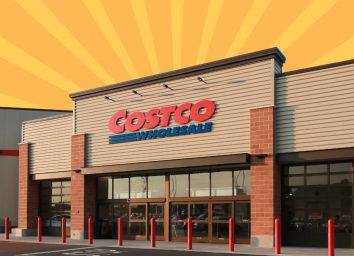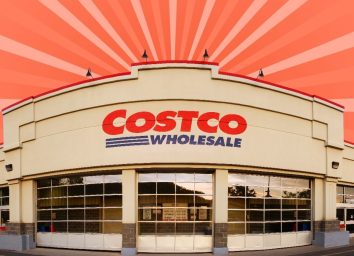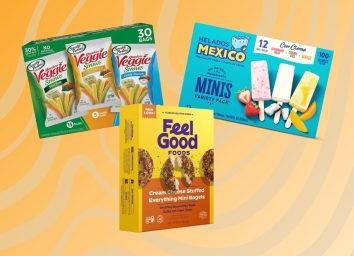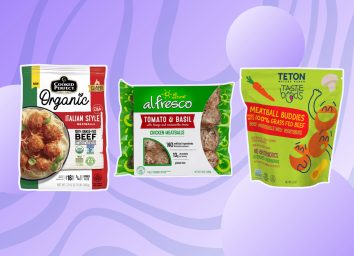10 Expert-Approved Grocery Shopping Tips Amid Faster COVID Spread
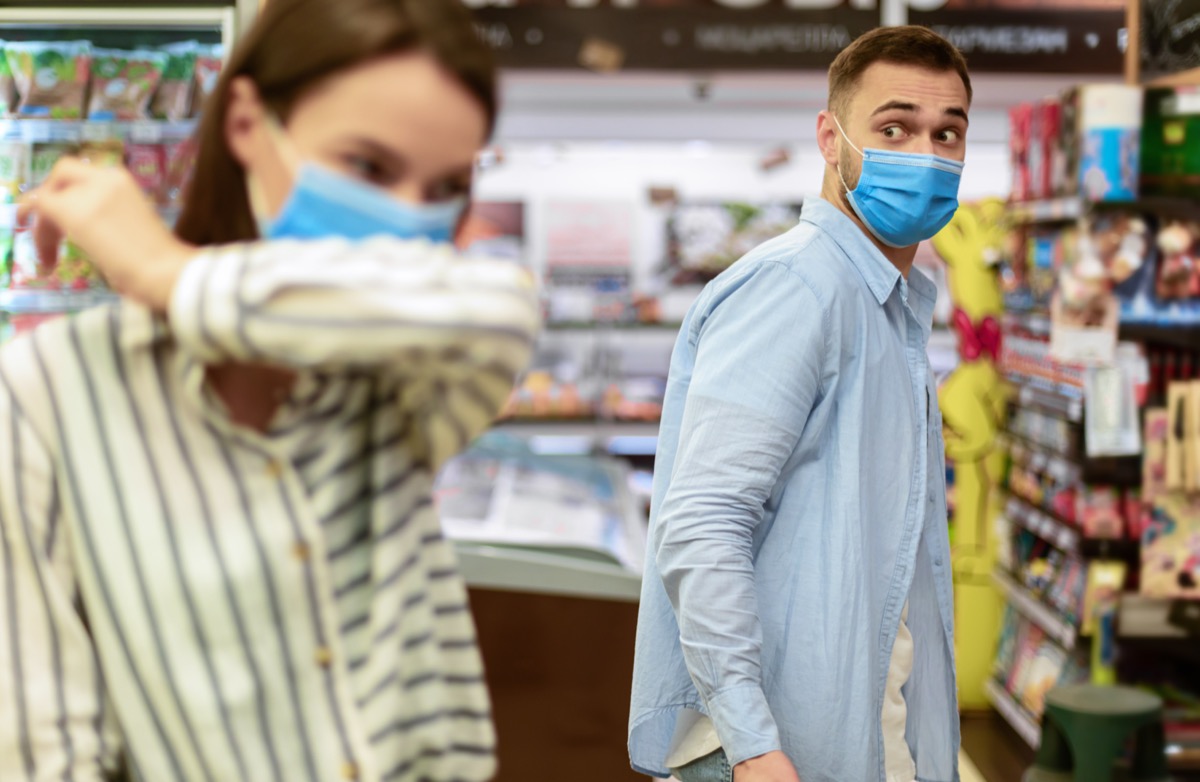
Several new variations of the coronavirus have been detected around the world, according to the CDC. One variation, called B.1.1.7, is now in the U.S. and seems to spread more quickly and easily than other variants. If it continues to spread like scientists think it will, making trips outside the house—such as going to the grocery store—could become even riskier and more stressful than they have been during the pandemic.
Of course, there are plenty of online and curbside grocery shopping services available, but most people still prefer going into stores. "Let's face it, most of us have not gravitated to 100% online shopping," says Anita Kanti, a certified life coach and author of Behaving Bravely. For some, the cost of delivery fees and tipping may be an issue. For others, they'd prefer to pick out their own food and essential items.
If that's you, here are some expert tips for keeping your grocery store visits as quick and safe as possible given the new, highly contagious COVID-19 strains. And for more, make sure to read The One Vitamin Doctors Are Urging Everyone to Take Right Now.
Always go to the same store.
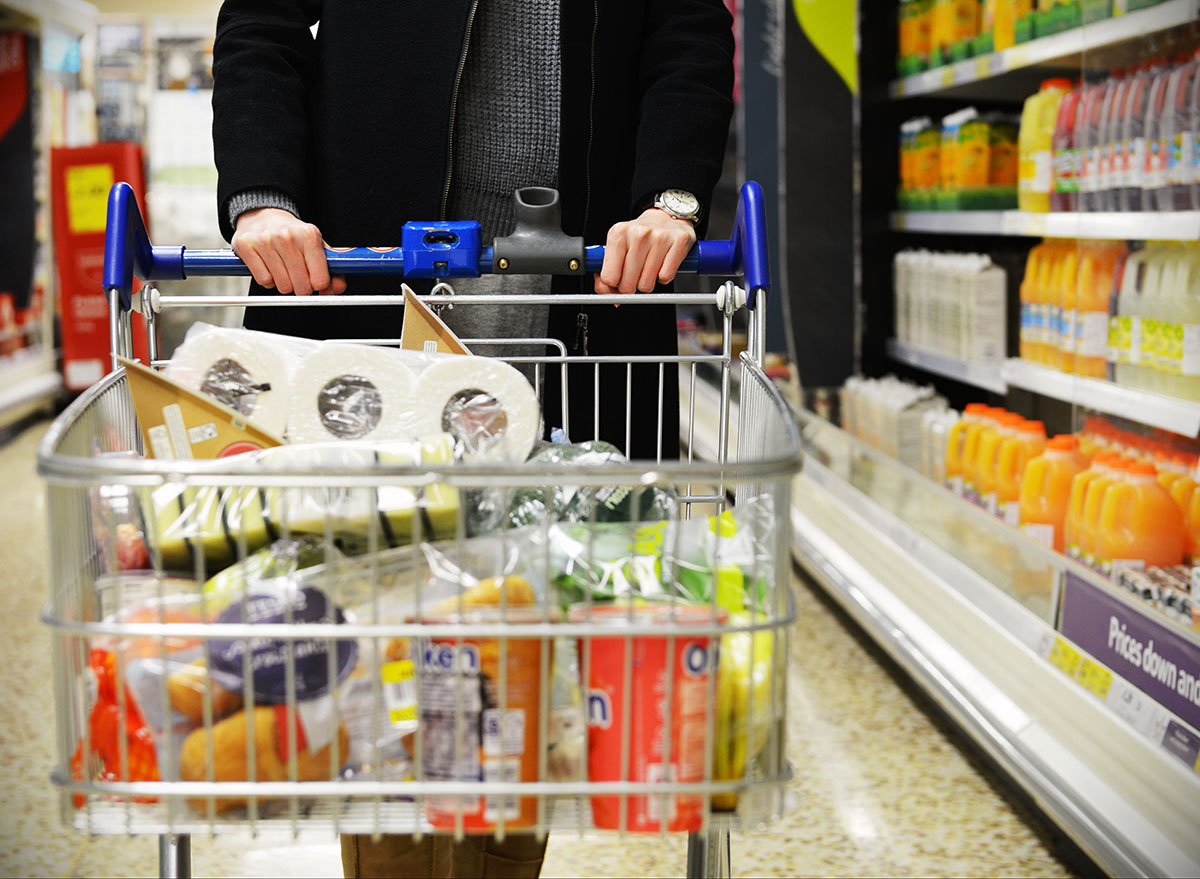
Keep stress to a minimum by going to a grocery store you recognize, Kanti says. You won't need to ask an employee where something is or get flustered when trying to find a certain aisle.
Plus, you can also get a store map at the customer service counter or on the grocery chain's app to get even more familiar with your local grocery store's aisles. Shops, an app by Aisle411, has the layouts of 13,000 stores and can help you find individual products, too.
Write your shopping list in order.
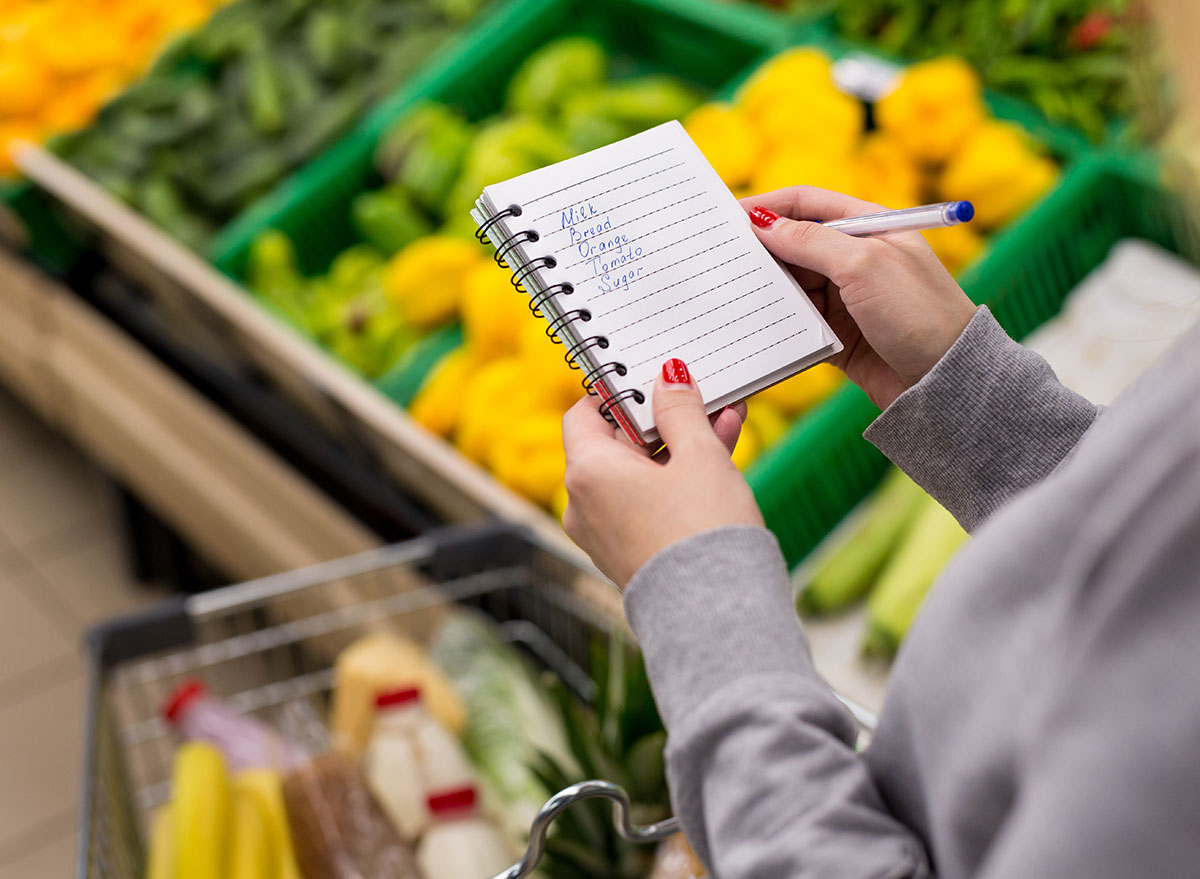
"You want to create your shopping list in the order of which you're going to shop so that you're not wandering around looking for where the ketchup is," says Phil Lempert, the Supermarket Guru who has been an author, speaker, and grocery store analyst for more than 25 years.
Planning like this is easy and will save you so much time. For more on what exactly you should write down, here are 20 Healthy Foods to Add To Your Coronavirus Grocery List.
Organize the list by category.
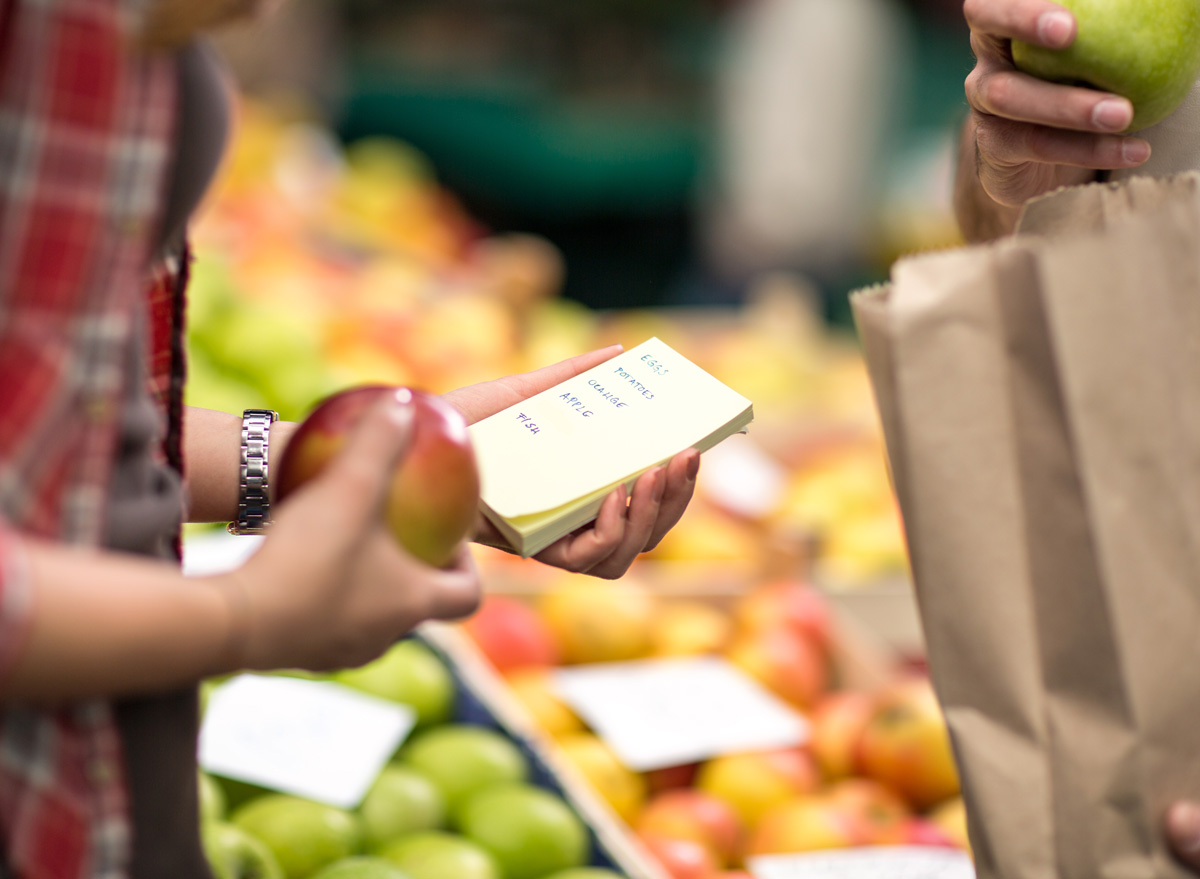
Group alike items together instead of writing down anything that comes to mind. "Don't just do a shopping list that says apples, wine, frozen pizza, and whatever else, but categorize on your shopping list all the produce items together, all the frozen food items together, and so on," Lempert recommends.
This way, you won't forget to get something that's way down at the bottom of your list, and can make your trip faster and more efficient.
Another tip: "At the bottom of the list, draw three horizontal lines—those are for impulse items," Lempert says. This limits the time you'll spend eyeballing everything in the aisle.
Related: Grocery Shortages To Expect in 2021, According to Experts
Don't start in the produce section.
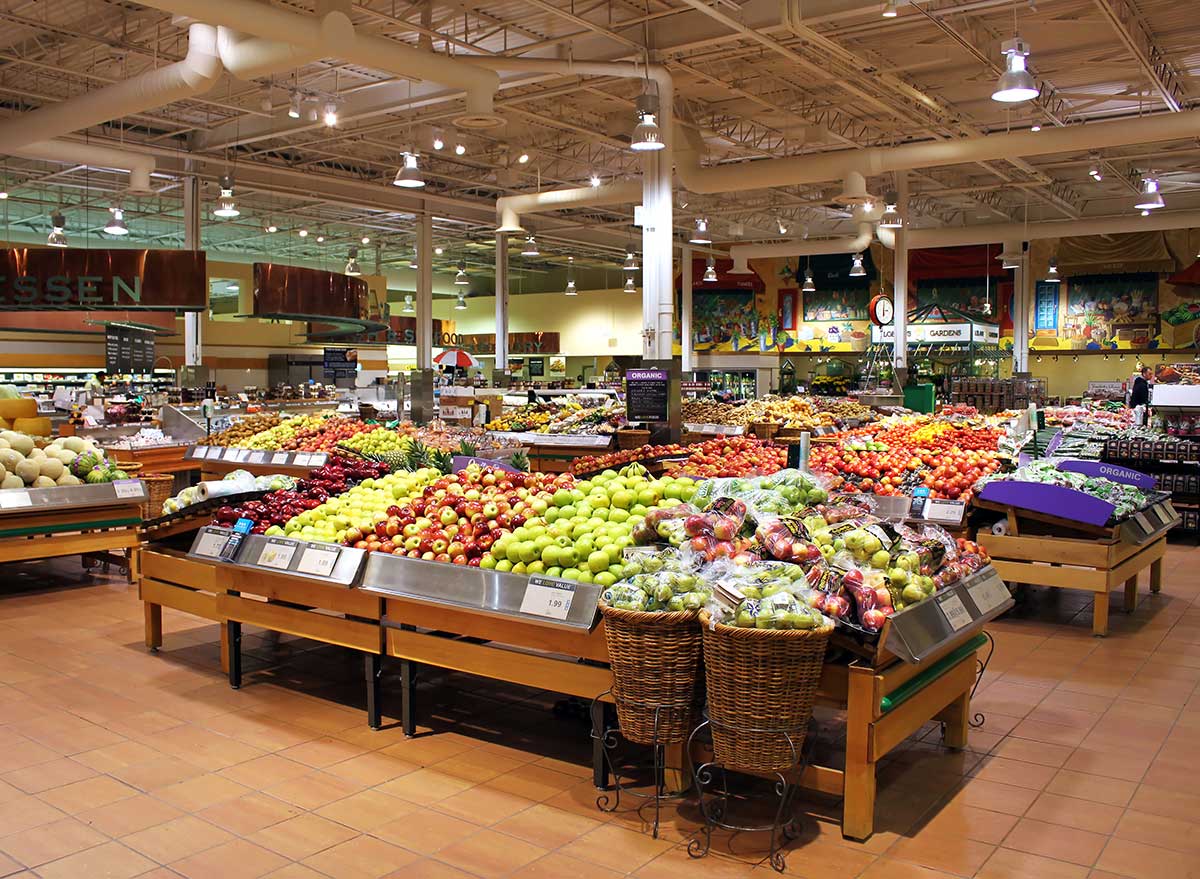
Supermarkets are arranged the way they are for a reason, and it's not to help you go grocery shopping quickly. "When you walk into the store, most of the time, you're going into the produce department, which is great," Lempert says. "It's by design because you've got all those colors, you've got all those aromas. It puts you in a better mood. Forget it. Now's not the time to do that."
Instead, he recommends beelining it to the center of the store for the "jars and boxes and cans that you know you need." Then, go to the dairy section and freezer aisles, followed by the produce section last. "Produce slows you down because it's willy-nilly… if you shop for everything else and you've been very rigid about what you're doing, by the time you get to the produce department, you're in that mindset to just say, 'Hey, I want an apple.' You get it and get out."
Structure your list with this in mind, and you may just set a new record shopping time. And if you want your next trip to be extra productive, here are 6 Grocery Stores That Are Already Offering the COVID-19 Vaccine.
Set a timer on your phone.
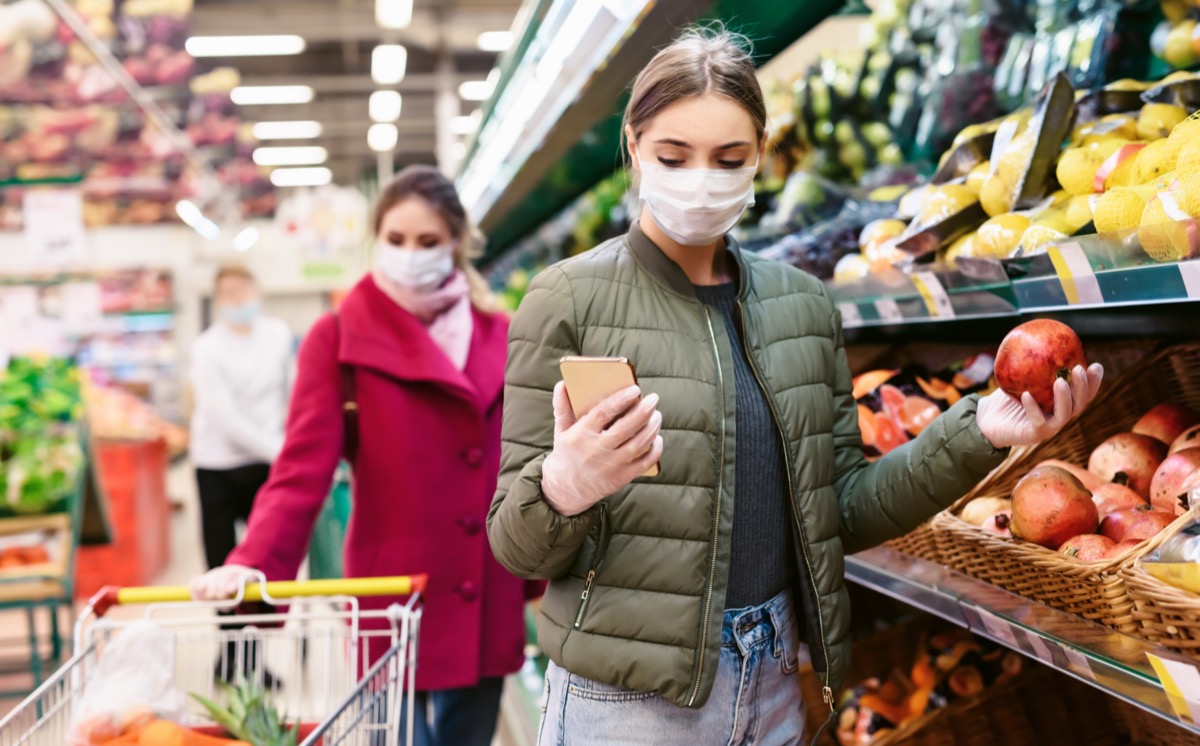
Another tip Lempert has for grocery shopping quickly is to set a timer on your phone. Although the CDC doesn't say exactly how quickly the new COVID-19 variations spread, a timer for 15 or 20 minutes can help you stay on track as you grab what you need. Once it goes off, either go to the checkout with what you have, or finish up quickly.
Organize your groceries by type on the conveyor belt.
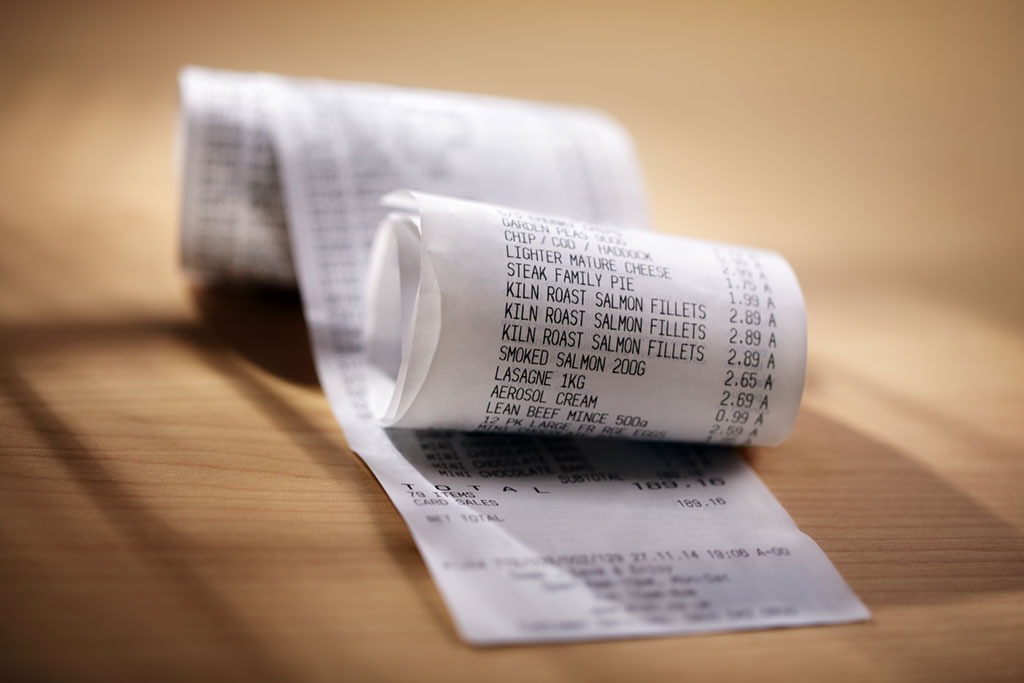
"When you get to the cashier, you want to put all the frozen foods together, the dairy foods together, etc." Lempert says. This way, your receipt will be organized by food type—which you can use as a reference for your next shopping trip.
Use the receipt as a reference for writing your shopping list, and to help you take stock of what you still have in your kitchen.
"Go through your cupboards, freezer, refrigerator, and take inventory," Lempert recommends. Cross off any items you don't need more of.
Related: This Popular Grocery Store Is Highlighting Minority-Owned Food Brands
Protect yourself.
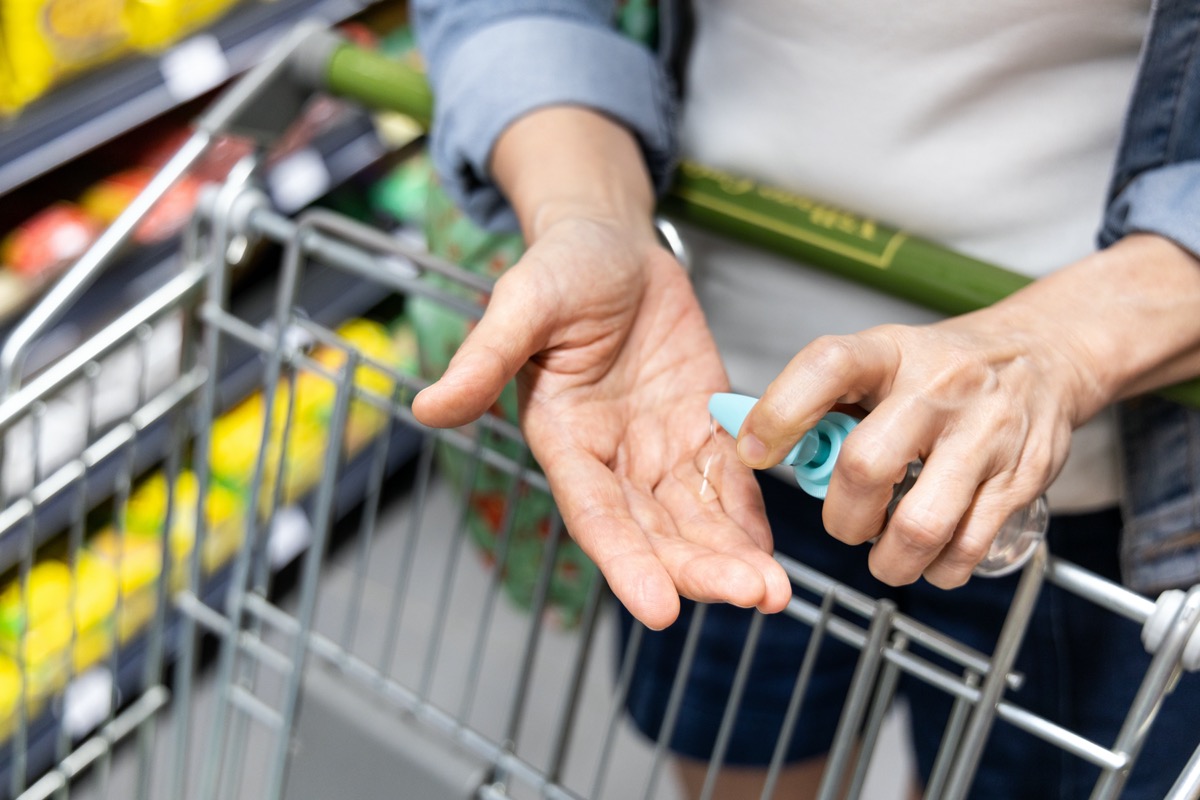
Bring whatever items you need to feel safe—a mask, gloves, hand sanitizer, etc.—on your next trip to the grocery store, says Perri Shaw Borish, MSS, LCSW, a Psychotherapist and Founder of Whole Heart Maternal Mental Health. Maybe wearing glasses, long sleeves, and pants helps you feel safer, too.
"Feeling like you are safely protecting yourself helps reduce worry and fear," she says. "Emotional 'safety gear' could take on the form of an imaginary bubble that surrounds you and keeps you physically distant from people in the grocery store."
Related: The Worst Way COVID Stress Affects Your Health
Go during off times.
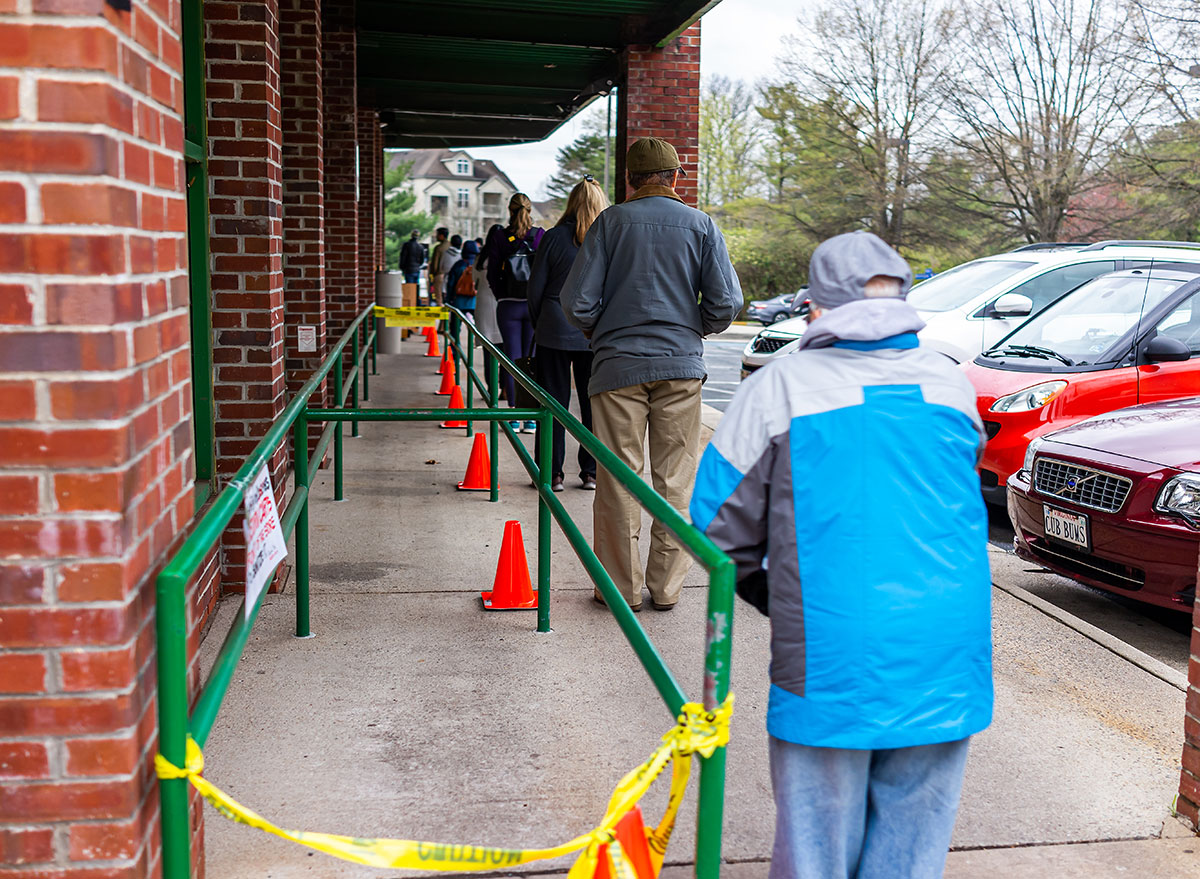
Even with the capacity limits many grocery stores have in place to control the number of people inside the store at one time, shopping at off-times is an incredibly easy way to keep yourself safe. According to data from Google Maps, more people have been shopping on the weekends during the pandemic. Monday morning around 8 a.m. is when stores are the least crowded.
For more on grocery shopping quickly, here are 13 Items Grocery Stores Stopped Selling This Year that you shouldn't put on your list.
Take steps to reduce stress.
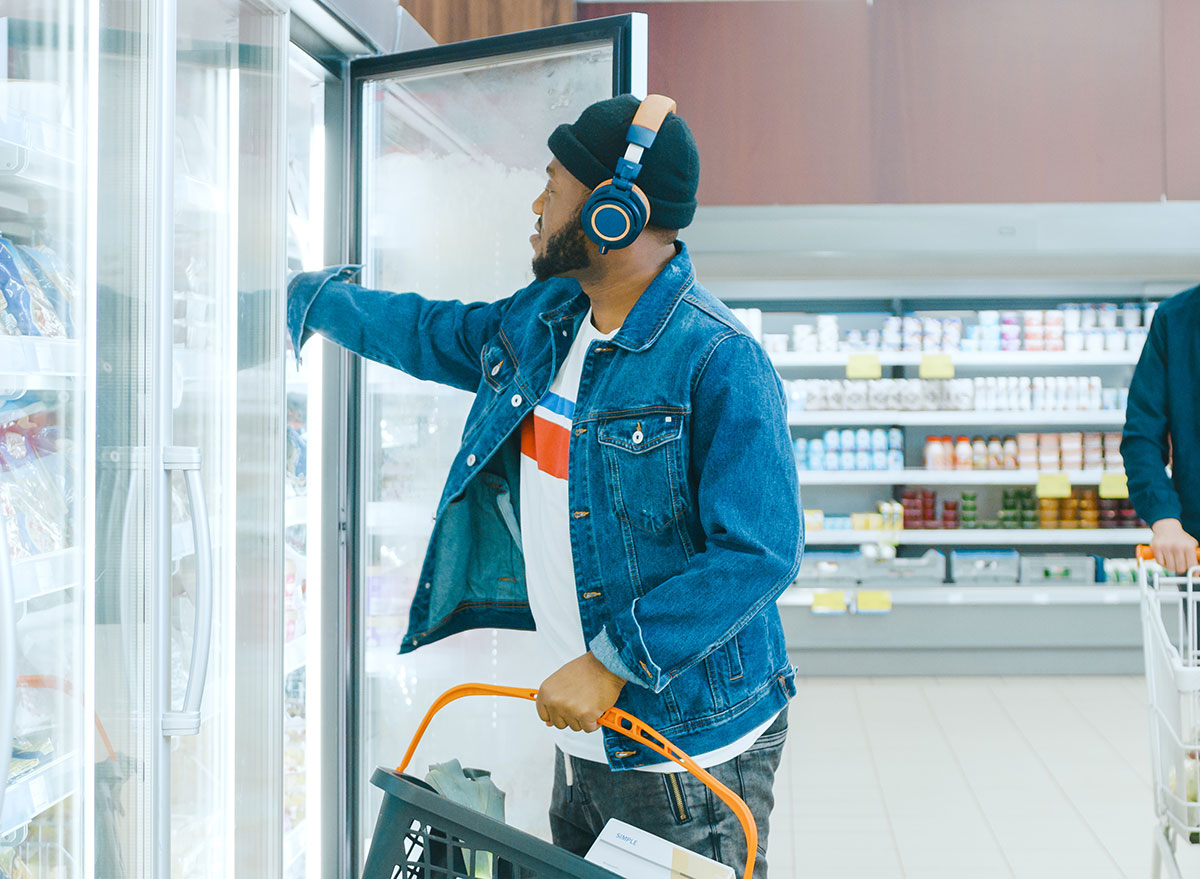
Stress can cause you to become disoriented, which isn't good when you need to stay focused in order to get your shopping done quickly. Plus, as Kanti says, "the harmful effects of worry and stress contribute to negative coping mechanisms that can be detrimental to our health."
If the store and the people in it are stressing you out, Kanti suggests: "Escape mentally by listening to sounds, music, or your favorite podcast while maneuvering down shopping aisles."
Remember to breathe.
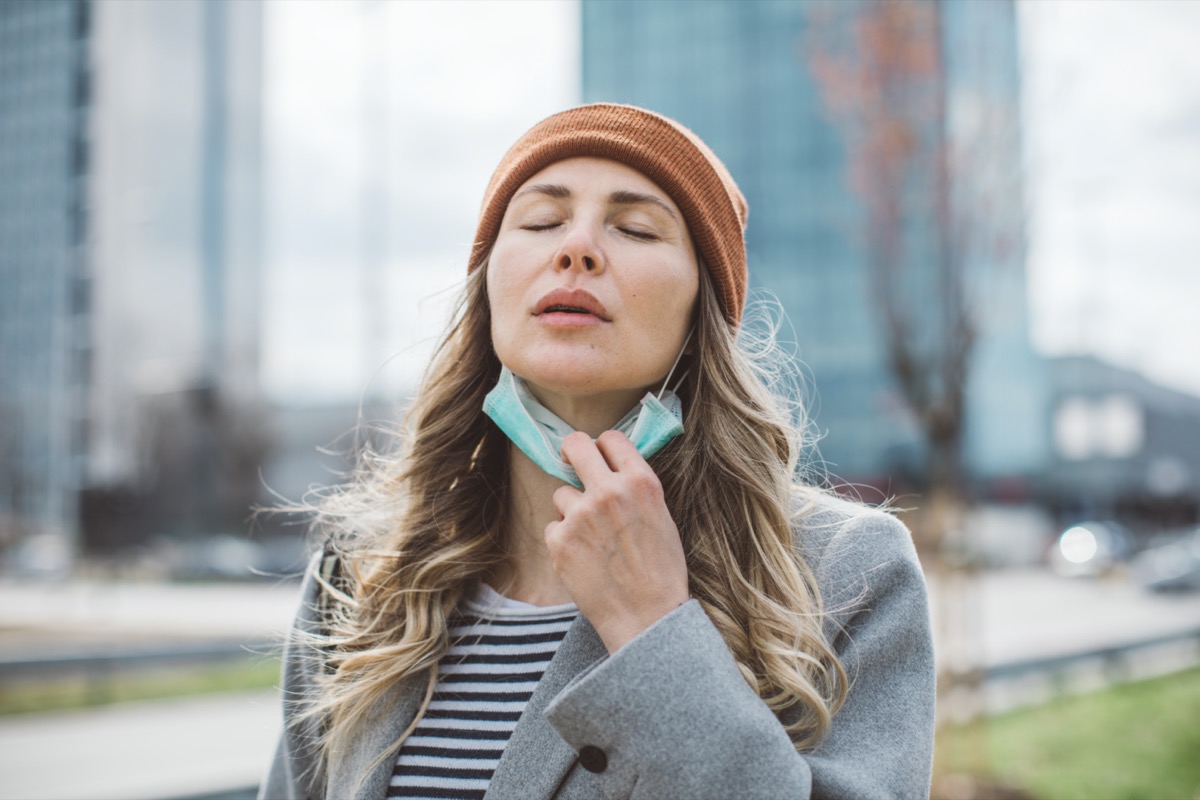
"We live with stressful situations beyond our control every day, and unfortunately, endless worrying and related anticipation can't be crossed off our shopping lists," Kanti says.
A tried and true method of calming down in a stressful situation like grocery shopping is to breathe—with your mask on, of course. "I really like to use breath as a way to help people learn to calm themselves down in stressful situations," says Shaw Borish. "I recommend either a 4-part breath or a deep belly breath, like a yoga breath."
To get all the latest grocery store news delivered right to your email inbox every day, sign up for our newsletter!
